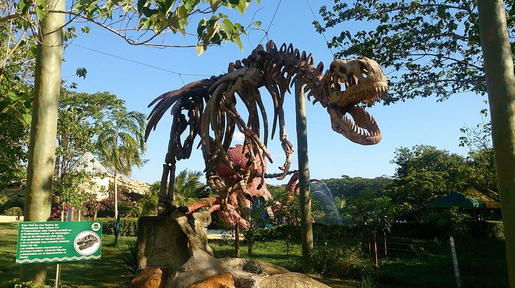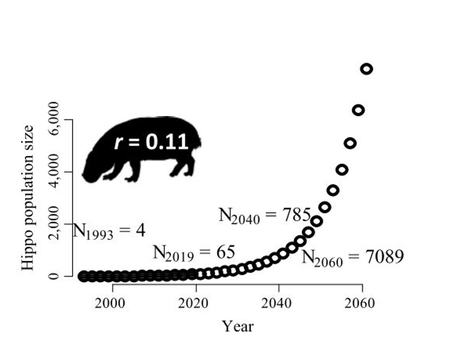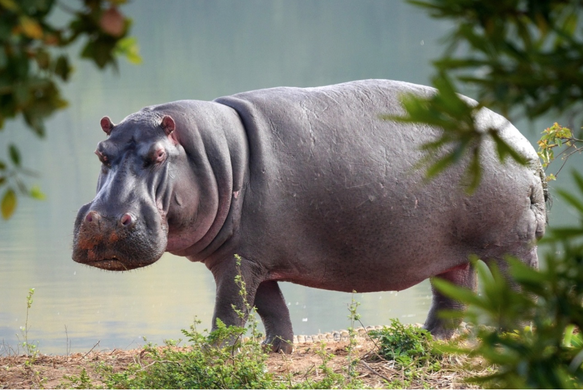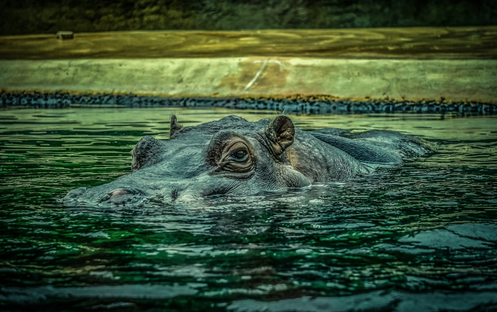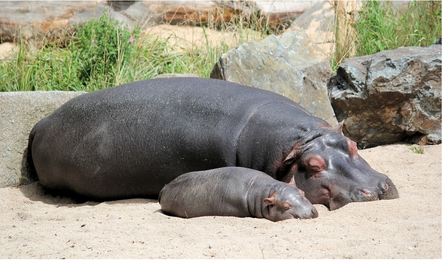 Hippo family, Savanah (Chris Stenger via Unsplash) Hippo family, Savanah (Chris Stenger via Unsplash) Columbia is worth seeing for its golden, palm-fringed beaches, lofty, snow-covered mountains, dense tropical rainforests, and scenic lakes. However, wild hippos are now a sight for sore eyes in the Magdalena River of Columbia, thanks to notorious camel Pablo Escobar. From Burmese Python in Florida to wild boars in Texas, European Starlings of the U.S to wild hippos of Colombia; invasive species have made whole ecosystems go haywire. “An invasive species is a non-native organism that causes ecological or socio-economic damage in a new environment”. These species muscle out native flora and fauna, competing for resources and territories and thus reducing biodiversity and altering habitats. Of the invasive species introduced by humans, Columbian hippopotamuses (Hippopotamus amphibius) date back to their exporter, cocaine kingpin Pablo Escobar. Native to Sub-Saharan Africa, these third-largest land mammals are not only relocating native Colombian animals but also altering the water channels and water quality. Hippopotamus FactsOwing to the reference with Pablo Escobar, we know them as “Escobar’s Cocaine Hippos.” Despite physical resemblances to even-toed ungulates, but hippos are actually they are related to the Cetacean (whale/dolphin) family. 5 feet tall and weighing up to 4,000 pounds, hippopotamuses can attain speeds of 25 mph on land. They don’t swim; however, they’re deceptively swift in the water. Thus they’re named “River Horse” derived from a Greek hippopótamos. It may sound bogus or apocryphal, but they’re reported to make the back wheels of a truck lifted while attempting to escape. “River hippos are violent and aggressive,” remarks a mammal keeper at the San Diego Zoo. Cocaine Kingpin Escobar's Hippos and Hacienda NapolesThe 1980s were a decade of Escobar’s criminal heyday. The ill-famed drug kingpin imported a whole menagerie of exotic animals into the zoo of his 2,225-hectare lake house, Hacienda Napoles; in the Magdalena Modio region of Antioquia. In his ranch, he had a private zoo with animals like rare tropical birds, zebras, elephants, giraffes, four of his favorite exotic beast hippopotamuses, life-sized statues of extinct dinosaurs, and a fleet of exotic cars as well. After they shot him dead in 1993, the government confiscated his luxurious estate. Most of the exotic species were captured and relocated or shipped away to national and international Zoos. But the large-sized, belligerent hippopotamuses were forsaken to bask in the Hacienda Napoles man-made lakes and waterways. Hot and humid Hacienda Napoles was the ideal habitat for the hippos with its grasslands to graze and zero natural predators. Forty years after the downfall of Pablo Escobar, the wild hippos have gone undomesticated and have multiplied exponentially. These are the only wild hippos outside Africa. People grapple with the problem of its fast-growing population and no one knows quite what to do with them. Wallowing in the Magdalena River, the hippos are now a threat to endemic biodiversity and townsfolk, who are also reluctant to abandon the hippos again How Many Hippos are in South America?It all started with four hippos... "Being abandoned till the 2000s, the descendant population has now swollen to about 100 who have inhabited the main river of Columbia; the Rio Magdalena,” says Jonathan Shurin (Jonathan B. Shurin, 2020). Shurin is an ecologist and an expert in water resources and quality from the University of California, San Diego. He refers to these hippos as “Escobar's Legacy.” With the absence of natural predators, the population will continue to rebound exponentially. Under such favorable conditions, hippos reach sexual maturity and enter the breeding cycle earlier in their haven. Studies estimate that in two to three decades, the number will surge up to a thousand. The species is long-lived up to 50 years, with high reproduction rates for decades in low-density populations. Based on demographical data from Africa, ecologist from Yale University, Subalusky, and fellow researchers predict a population of 800 hippopotamuses by 2050. Their significantly high reproductive rate, 11% per year, could lead the index to 5000 or above (Subalusky et al., 2019). Do Hippos Kill Humans?Lethal hippos would kill 500 people a year in their natural habitat; Africa. However, no deaths have been reported in their new home. Locals are insouciant about them; “they’re learning to co-exist with them,” remarks Shurin. The hippos are aggressively territorial. There are complaints against hippos regarding crop damages and scarring ranch owners and fishermen near Puerto Berrio, denying them access to Magdalena River (Subalusky et al., 2019). This growing population is getting on the nerves of the Colombian authorities, who fear that an attack by the unchecked swarm of mighty-hippos is inevitable any moment. Environmental Impacts on the Magdalena RiverMany species evolve calmly in isolation in the wide waterways of the Magdalena River. For conservationists and ecologists, it is an important question whether the free-roaming and water-muddying hippos are having positive or negative environmental impacts on the vast wetlands and aquatic biodiversity. “Nocturnal hippos graze on grass all night and defecate in water all day,” Shurin said. Thus, streaming down the nutrients from terrestrial to the aquatic ecosystem and altering the overall balance of the ecosystem. In collaboration with Natalie T. Jones, a biologist also from San Diego, and other Colombian researchers, in a National Geographic Society-funded project, Shurin is leading the study of the effects of hippos on their new home by comparing lakes with and without hippos. They took water samples from several small lakes and observed the effects of semi-aquatic hippos on the chemistry, ecology, and overall productivity of the aquatic ecosystem (Jonathan B. Shurin, 2020). The results suggested that there’s an overload of so-called 'Organic Waste' that they dump into the water. It has deteriorated the water quality in hippo-colonized lakes and rivers. The cyano-bacteria feast on the fertilizer pulse that causes toxic algal bloom, making the water anoxic, and leading to mass fish mortality. “[Toxic algal blooms] can have various negative repercussions, from the outbreaks of harmful algae blooms, and if the population growth remained unchecked, the aftermath could be much more severe,” Shurin adds. If the population of the mega-herbivore continued to swell exponentially, the grasslands would deplete, and “there's public safety concern too,” says Shurin. Ecosystem Services by HipposSome ecologists and conservationists consider hippos as “ecosystem engineers” given their drastic altering-effects on local ecology. The nutrient surplus or oxygen-depleted waters may insidiously affect the aquatic biodiversity as well. “They might be filling the niche for long-extinct herbivores in South America, thus restoring the ecosystem servicesprovided thereby,” a biologist’s remarks in a letter in an Ecology journal. Some positive ecosystem services provided by these massive animals include: nutrients funneling down from land to water as they wallow, massive die-offs of fish, which is a food source for scavengers, altered hydrology and geomorphology of lakes as they scour their massive bodies through vegetated aquatic land, forming paths/ponds thus connecting riparian and aquatic ecosystems, and maintaining grassland encroachment by feeding on it (Subalusky et al., 2019). These might ensure resource availability for some species. However, its influence of this invasive species on native wildlife such as wild otters, turtles, and manatees, are uncertain. Hippo CullingZoos are reluctant and incapable of taking hippos under their care due to exorbitant costs associated with relocation. The relocation of one juvenile hippo to a Colombian Zoo in 2018 amounted to about $5000. Presently, possible solutions for checking the population of hard-skinned creatures are relocating them to captive facilities after surgical sterilization or a straightforward culling. A team from CORNARE has been able to sterilize juvenile hippos over the last decade. This is quite a dangerous attempt to trick and castrate the aggressive beast. Piercing through its hard skin is fraught with risk. After which the animal is sterilized, sealed, and regularly monitored. The whole procedure could last for about half a day. It is hard on the animal, however, the agency acknowledges that this campaign is not a prime solution to halt the ongoing population explosion. If we don’t act now, the dramatically swelling number of hippos would make it more difficult. It is a live debate as it is "more humane to do what you're going to do to 80 animals than to a thousand," Shurin states. With not enough money to fund the sterilization, the community backlashes to herd culling. In 2009, when a male hippo named Pepe was euthanized, there was an extreme public outcry against the authorities. The only reason for this resistance from the local community is that “they attract tourists”. Some restaurants, however, offer sightseeing (cliché term) of hippos while customers feast on delicacies. The natives also enjoy surprise visits. The hippo plush, rings, and key chains are being sold. This is a positive socio-economic return of beastly hippos.  Hippo Plush via Unsplash Hippo Plush via Unsplash Nonetheless, wild hippos are in a way, filling up and re-wilding the niche for species like large mammoths and sloths that once inhabited the region. But with their number ballooning up, they pose a territorial threat to the natives. Columbian authorities have their heads wrapped around the 'celebrity hippo' problem. What if they sterilized the entire species rather than culling them, at long last paving way for its extinction? What are your thoughts? AuthorNida Riaz is a freelance blogger based in Pakistan. She started writing about her passion for the environment when the world came to a stop in early 2020. References
Jonathan B. Shurin, N. A.-R., Daniel Duque Negro, David Echeverri Lopez, Natalie T. Jones, Oscar Laverde-R, Alexander Neu, and Adriana Pedroza Ramos. (2020). Ecosystem effects of the world’s largestinvasiveanimal.Ecology101(5):e02991.10.1002/ecy.2991.doi:http://onlinelibrary.wiley.com/doi/10.1002/ecy.2991/suppinfo Subalusky, A. L., Anderson, E. P., Jiménez, G., Post, D. M., Lopez, D. E., García-R, S., . . . Jiménez-Segura, L. F. (2019). Potential ecological and socio-economic effects of a novel megaherbivore introduction: the hippopotamus in Colombia. Oryx, 1-9. doi: 10.1017/s0030605318001588
5 Comments
What
1/25/2022 09:23:21 am
Today I learned Pablo Escobar was a camel.
Reply
Albert
5/21/2022 09:39:50 am
Mr. Homo sapien, by looking in the mirror you will see a specimen of the most invasive species in the universe.
Reply
Tom Wheeler
7/18/2022 09:37:13 pm
Africa is too ignorant to safeguard its treasure of rare animals. If Hippos go extinct in Africa we will be sorry that we killed them in Columbia. The question should be whether to bring Rhinos to the Americas because their also endangered and Rhinos are not aggressive and territorial like Hippos.
Reply
George
9/22/2022 05:34:33 am
Just have a hunting season every year on hippos. Sell permits to big game hunters, and cull 10 adult hippos each year. Should keep the numbers down. Once your hippo numbers get to below 50, then reduce amount of culling to 5 per year. Problem solved without all the handwriting.
Reply
Jay Kawatski
3/31/2023 08:25:44 pm
4 pounds????
Reply
Leave a Reply. |
|
|
(833) CMS-LINE
(833) 267-5463 PO Box 13477 Mill Creek, Wa, 98082 © Conservation Made Simple. All rights reserved.
501(c)(3) Non-Profit, Tax ID#: 82-1646340 Copyright © 2021 Conservation Made Simple |

